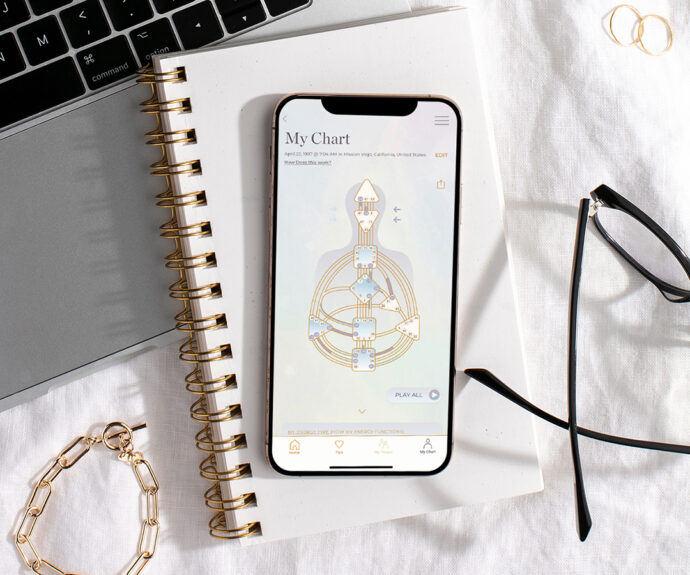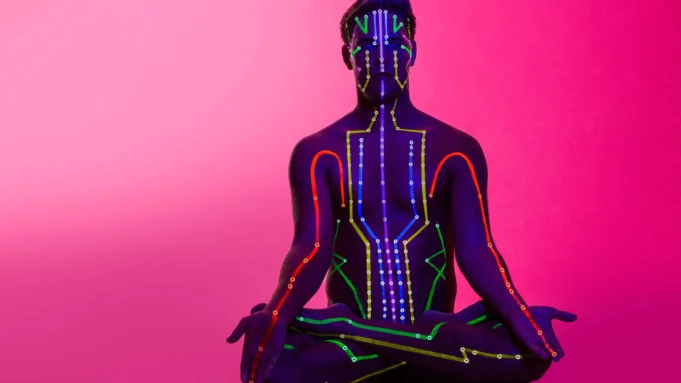Human Design is a unique system that combines elements of astrology, the I Ching, Kabbalah, and the chakra system to create a “map” of your authentic self. It’s a tool that provides insights into your personality, your strengths, and your challenges. But more than that, it’s a guide to understanding how you interact with the world and how you make decisions.
When it comes to mental health, understanding your Human Design can be a game-changer. Mental health is not just about the absence of mental disorders. It’s about understanding yourself, your thoughts, your emotions, and your behaviors. It’s about recognizing your patterns, your triggers, and your coping mechanisms. And that’s where Human Design comes in.
By providing a detailed understanding of your unique traits and behavior patterns, Human Design can help you navigate life with more ease and less stress. It can help you understand why certain situations trigger anxiety or depression. It can help you recognize your patterns of thought and behavior that contribute to stress and mental health issues. And most importantly, it can guide you towards decisions and actions that align with your true nature, leading to improved mental health and overall well-being.
Understanding the Basics of Human Design
At the heart of Human Design are four main types: Manifestor, Generator, Manifesting Generator, and Projector. Each type has a unique way of processing information and interacting with the world.
Manifestors are initiators, the ones who get things started. They are independent and often prefer to work alone. Generators, on the other hand, are the builders. They have a lot of energy and can sustain effort over time. Manifesting Generators are a combination of the two, with the ability to initiate and build. Projectors are the guides, the ones who see the big picture and can guide others.
In addition to the types, this approach also includes nine centers, each representing a different aspect of your being. For example, the Head Center is about inspiration and ideas, while the Heart Center is about willpower and ego. Understanding your defined and undefined centers can provide insights into your strengths, your challenges, and your potential for growth. The best way to become aware of them is to Create Human Design Chart and start from there.
Its Impact on Mental Well-Being

Understanding your Human Design can have a profound impact on your mental health. For one, it can lead to greater self-acceptance. When you understand your design, you realize that your traits and behaviors are not flaws or weaknesses. They are simply part of who you are. This can reduce feelings of guilt, shame, and self-criticism, which are common contributors to mental health issues.
Understanding your Human Design can improve your decision-making. Each type has a unique decision-making strategy. For example, Manifestors are designed to initiate, so they thrive when they take action quickly. Generators, on the other hand, need to respond, so they do best when they take some time to consider their options. By following your strategy, you can make decisions that align with your true nature, reducing stress and improving your mental well-being.
Recognizing Cognitive Patterns and Limiting Beliefs
It can also shed light on your cognitive patterns and limiting beliefs. These are the thoughts and beliefs that hold you back, that keep you stuck in patterns of stress, anxiety, and depression. By understanding your design, you can recognize these patterns and beliefs and start to challenge them.
If you have an undefined Heart Center, you might struggle with feelings of unworthiness. You might believe that you have to prove yourself to be loved and accepted. Recognizing this pattern can help you challenge this belief and replace it with a healthier one, such as “I am worthy just as I am.”
Embracing Authenticity and Self-Acceptance
One of the most powerful aspects of Human Design is its emphasis on authenticity and self-acceptance. It teaches that each of us is unique, with our own strengths, challenges, and ways of interacting with the world. And it encourages us to embrace this uniqueness, to be true to ourselves, and to accept ourselves as we are.
This can have a profound impact on mental health. Self-acceptance is a key component of mental well-being. When we accept ourselves, we are less likely to be critical and judgmental towards ourselves. We are less likely to feel guilty or ashamed. And we are more likely to feel confident, content, and at peace with ourselves.
Strategies for Aligning with Human Design

Aligning with your Human Design is not about changing who you are. It’s about understanding who you are and making decisions that honor your true nature. There are many strategies for aligning with your design, including meditation, journaling, and self-reflection.
Meditation can help you connect with your inner authority, the part of you that knows what is right for you. Journaling can help you explore your design and reflect on how it shows up in your life. And self-reflection can help you recognize your patterns and triggers and develop strategies for managing them.
Navigating Relationships with Human Design Awareness
Understanding your Human Design can also improve your relationships. By understanding your outline and the designs of others, you can foster better communication, empathy, and understanding. You can understand why others act the way they do, and you can communicate your needs and desires more effectively.
If you are a Projector and your partner is a Generator, you might find that you need more alone time than your partner. Understanding your designs can help you communicate this need and find a balance that works for both of you.
Utilizing Human Design in Decision-Making
Human Design can also guide you in making decisions that align with your true nature and desires. Each type has a unique decision-making strategy. For example, Manifestors are designed to initiate, so they thrive when they take action quickly. Generators, on the other hand, need to respond, so they do best when they take some time to consider their options.
Human Design and Coping with Stress
Knowing your Human Design can help you identify your stress triggers and develop coping mechanisms. For example, if you have an undefined Throat Center, you might feel pressure to speak or to be heard. Recognizing this trigger can help you develop strategies for managing this pressure, such as taking time to reflect before speaking or practicing active listening.
Human Design and Finding Life Purpose

Understanding your Human Design can offer insights into your life purpose and career paths. By aligning with your authentic self and talents, you can find a career that fulfills you and contributes to your mental well-being.
Testimonials and Personal Stories
Many individuals have experienced positive changes in their mental health through embracing their Human Design. These testimonials and personal stories serve as powerful reminders of its potential to improve mental health and overall well-being.
Seeking Professional Guidance
While understanding your Human Design can provide valuable insights, it’s important to seek guidance from experts and mental health professionals when applying these principles to mental health. They can provide a deeper understanding of your design and guide you in applying this knowledge to improve your mental health.















